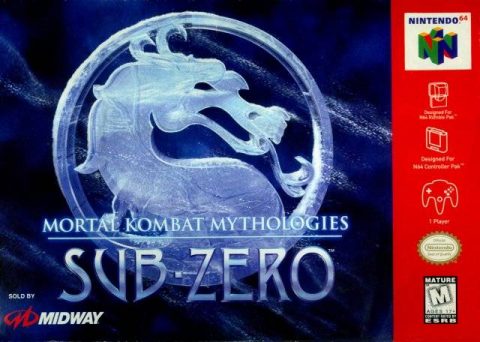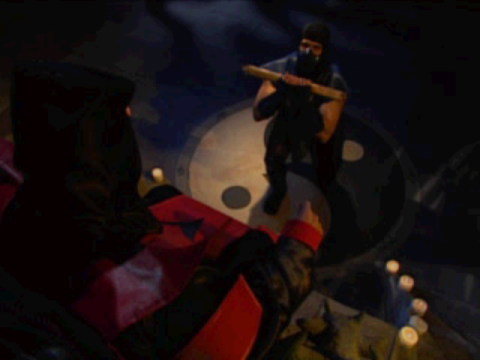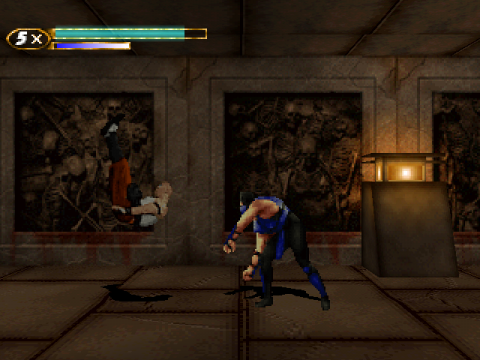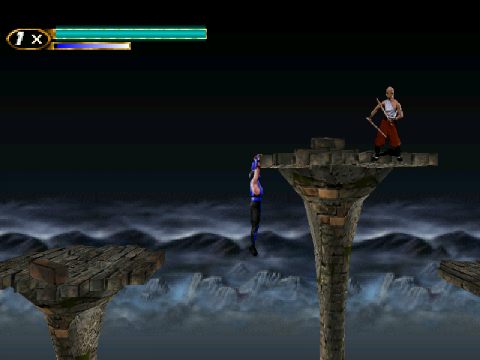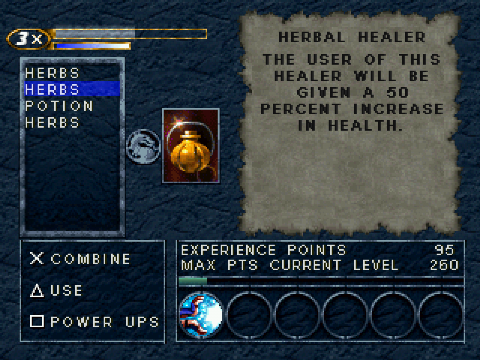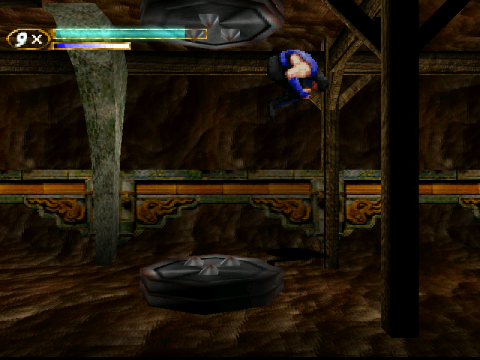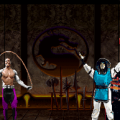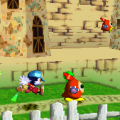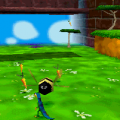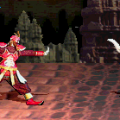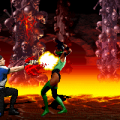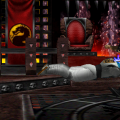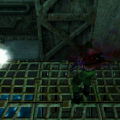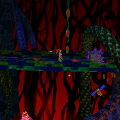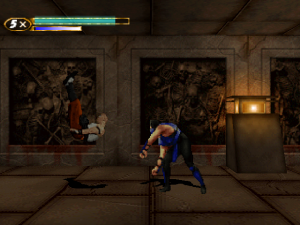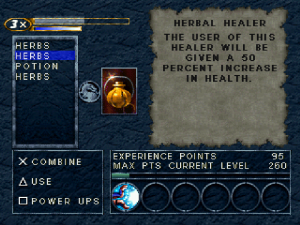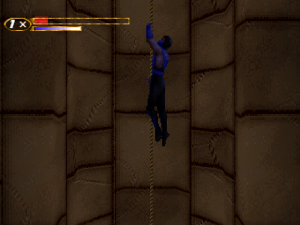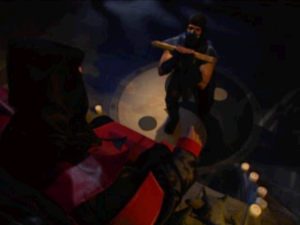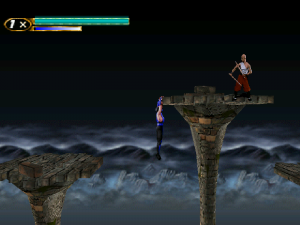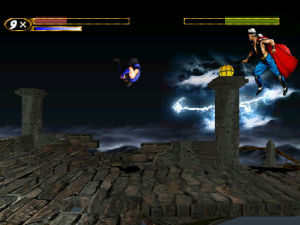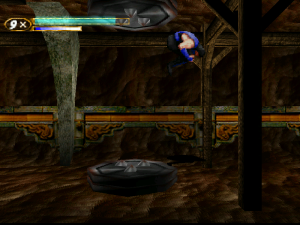- Mortal Kombat (Introduction)
- Mortal Kombat (1992)
- Mortal Kombat II
- Mortal Kombat 3
- Ultimate Mortal Kombat 3
- Mortal Kombat Trilogy
- Mortal Kombat 4
- Mortal Kombat Mythologies: Sub-Zero
- Mortal Kombat: Special Forces
- Mortal Kombat: Deadly Alliance
- Mortal Kombat Deception
- Mortal Kombat: Shaolin Monks
- Mortal Kombat Armageddon
- Mortal Kombat VS DC Universe
- Mortal Kombat (2011)
- Mortal Kombat X
- Mortal Kombat (Miscellaneous)
Fighting game spin-offs are honestly a great idea, in theory. You have developers who build up these universes with a diverse cast of characters, each with their own personalities and goals. It would only make sense to have a game about what the characters do outside of the ring. But sadly, it’s an idea that hardly ever works in practice, with games like Street Fighter 2010 and Death By Degrees proving that fact. Mortal Kombat: Mythologies was actually meant to serve as a prequel to the series and to hype players up for MK4, which was released in arcades around the same time. Sadly, however, it doesn’t succeed well at doing either.
A couple of years before the events of the first game, a mysterious sorcerer known as Quan Chi hires the Lin Kuei to steal an amulet for him. Since Sub-Zero is the best guy they have, they send him into the Shaolin temple where the map leading to the amulet is held. Quan Chi is also smart enough to hire (the currently alive) Scorpion, in case Sub-Zero happens to screw up. A few stages later, Sub-Zero manages to get to the Temple of the Elements, where the amulet is held. When he reaches the relic, Quan Chi shows up, steals it and explains that it’s actually the power source for the fallen elder god Shinnok. Raiden is not at all happy about this, and sends Sub-Zero into the Netherrealm to go get it back before Shinnok can escape. Surely this little mistake of his won’t have far-reaching consequences, right?
On a side note, there’s something a little strange about one of the levels, the Prison of Souls. Raiden makes Sub-Zero go into the Netherrealm to chase after Quan Chi, and the prison is where he ends up. The thing about the Prison of Souls, however, is that the name isn’t trying to be poetic. It’s an actual prison. With spotlights, steel walkways, force fields, key cards, and guards that shoot lasers out of their staffs. The last time we saw the Netherrealm was in Ultimate Mortal Kombat 3, where it was just the standard fire and brimstone depiction of Hell. Either this is a more developed part of the Netherrealm that nobody’s ever bothered visiting again afterwards, or Midway just quietly retconned it out of existence, which is the more likely theory.
So, how does the actual game play? Imagine this: a sidescrolling action game, one that would involve precision platforming and the need for careful controls. All right, now imagine it uses more or less the exact same control setup as MK3. If you don’t go run screaming from this article yet, you might be fit to play this. ‘Might’ being the key word here. To be fair, they did some minor changes to the controls, mostly so Sub-Zero actually has a little more air control than in the fighting games. What’s more annoying is that there’s a specific button needed to make Sub-Zero turn around, so if you end up getting trapped between two guys, you’re going to be in trouble. Actually fighting opponents works just like it did in the MK games, with attacks like the sweeps, uppercuts, and throws being done the same way.
Since this is a prequel, Sub-Zero isn’t quite as powerful he was in the original MK. All he starts the game off with are his basic moves and a couple of chain combos. He’s also able to perform his classic spine rip after defeating certain bosses, which has minor effects on the plot depending on who is killed with it. The differences are only minor, though, since you’ll get the same ending either way. If you perform a Fatality on Scorpion, who at this point is still alive, he’ll show up in specter form later in the game for a rematch. If you don’t, however, Scorpion apparently gives up and goes home, and you’ll get a cutscene with Shinnok at the point Scorpion would have shown up if you killed him.
Although Subby’s move set starts kind of limited, beating on people will earn him experience, and whenever he reaches a certain threshold, he unlocks a new move. However, you can only get so much experience on each stage. Sub-Zero goes from the classic staples like the ice ball and slide, before he becomes able to throw his ice in multiple directions and in the air. There’s nine different powers in total, with the final ability letting him freeze every mook on the screen at once. Unlike the MK games, however, his use of powers is limited by the “ice” meter, which recharges slowly over time and with the use of items. Sub-Zero can also climb onto ropes, the animation for which is especially awkward. Have you ever seen anybody climb a rope without using their lower body at all? You will now. Sub-Zero can also grab onto ledges, and given that you’ll be doing a lot of platforming with Mortal Kombat controls, you’ll be very, very thankful you can do this.
There’s an inventory to hold all the stuff you find, as limited as it is in practice. Most of the items you pick up are keys or some other things you need to progress. There’s also other power-ups that do things like restoring Sub-Zero’s health and ice, boost his damage or defense, or things like that. But he can only hold so many items, and key items will take up the same inventory slots as the power-ups. So if you need to pick up an important item, but you’re full of other power-ups, too bad, you have to use one of them. Weirdly enough, there’s an option to “combine” items, but this only works with an item that increases the effect of your healing items, and absolutely nothing else. A holdover from an idea that didn’t quite pan out, possibly?
The problem with the game is that neither the combat nor the platforming actually work. For the platforming, imagine a Prince of Persia mod made by an insane person. There’s traps and pits on pretty much every single screen, and a good portion of these will instantly kill Sub-Zero if he gets caught by them. Even on the first level, you have to deal with crushing pillars that end Sub-Zero at once if he walks under them, forcing you to do a sweep under each one so you can cross safely. The good news is that unlike most games, the traps will kill enemies, too, but if there are enemies around, they’ll probably just knock you into a trap themselves. And of course, there’s all the precision platforming you have to do, with every jump timed perfectly. Miss one, and you die and get sent back to the last checkpoint, which isn’t much fun at all given how far apart they can be. When you’re not dealing with the multitude of traps and pitfalls, you have to scour the level for keys and switches that open even more traps and pitfalls for you to avoid.
The enemies are just as much of a pain. Even the standard mooks can take off about half your life in just a few hits. The only real way to win a fight without taking too much damage is to try to freeze every mook you come across, run up to them, and unleash your biggest chain combo. As you go further into the game, the mooks start increasing in annoyance factor. By the third level, you have to deal with Shaolin monks who float around, teleport, zap you with lightning whenever you get close, and can only be killed by freezing them while they teleport. There’s not that much enemy variety, either, since you spend five of the eight stages fighting Shaolin monks. Sure, some of them have weapons, some float around, and some have super speed, but some more variation between all the mooks would have been nice. You can actually skip fighting most of the enemies just by running away from them, but this generally isn’t a good idea since you’ll want their experience.
The boss fights are decent, even if some of them will end up being a major pain if you don’t have a guide handy. The first fight against Scorpion isn’t very difficult, since he doesn’t use any of his special moves against you. By the time you reach Fujin, however, things get way harder. What’s especially nasty is that once you manage to figure out his pattern and beat him, the game throws yet another trap at you, where he creates a cyclone and tries to suck you in. If you don’t already know to run to the edge of his arena and grab it to be safe, you better be ready to fight him all over again. There’s also a point where Sub-Zero has to fight a guard riding a fire-breathing dinosaur. No explanation, no context. There’s just a dinosaur, and Sub-Zero has to fight it, because it’s in his way.
The graphics are an odd mix of 2D sprites and 3D level geometry, sort of like how Klonoa handled it, except with more spine ripping. While all the action happens on a 2D plane, there’s the occasional bit of camera trickery, like having the camera zoom out or in at certain points. The levels do look nice, even if the geometry can get pretty blocky, given that this is PS1 hardware we’re dealing with. Some of the larger bosses are also done as 3D models. At the very least, Midway put enough effort to record new sprites for Sub-Zero, as well as the mooks that he has to fight. There’s a very subtle effect that makes the lighting in the room actually affect the character sprites, which is a small detail, but it’s nice that they made the extra effort, at least.
The cutscenes are done with FMV, using live actors on a greenscreened backdrop. Neither the acting nor the effects in these are great, since Rich Divizio as Quan Chi spends every scene he’s in chewing the scenery as hard as possible. Sub-Zero, on the other hand, is pernamently set to ‘angry.’ The best part of the cutscenes would have to be the outtakes you can unlock. To get these, you have to get all the way to the final battle with Shinnok. After performing the sequence of moves you need to do to steal his amulet, he becomes a demon. At this point, if you escape through the portal that opens up, you’ll get the standard ending. Find a way to kill him in demon form, however, and you get the extra scenes after the credits. Here, you get to watch the actors goof around, flub their lines, and overact even harder than in the actual cutscenes. It’s obivous that they’re at least having a great time, given how often they bust out into laughter in the middle of their lines.
For your own sanity, Mythologies is best given a wide, wide berth. There’s pretty much nothing you wouldn’t see by just watching a longplay, and you’ll be saving yourself an unimaginable amount of frustration. Sure, getting backstory on the MK universe is nice, and so is the concept of an MK-themed action adventure. But actually playing it will lead to more frustration than anybody but the most expert game players can handle. There’s something so close to being a good idea in there, but with the insane difficulty and weird controls, you’d be better off avoiding it. This wouldn’t be the last time a Mortal Kombat action game would be made, and it only gets worse from here.
The only major difference between the PS1 and N64 versions of the game is that while the PS1 version uses FMV, the N64 version uses still images and text to tell its story. The choice lies entirely in your ability to sustain gratuitous amounts of live action FMV. Consult your doctor beforehand.

